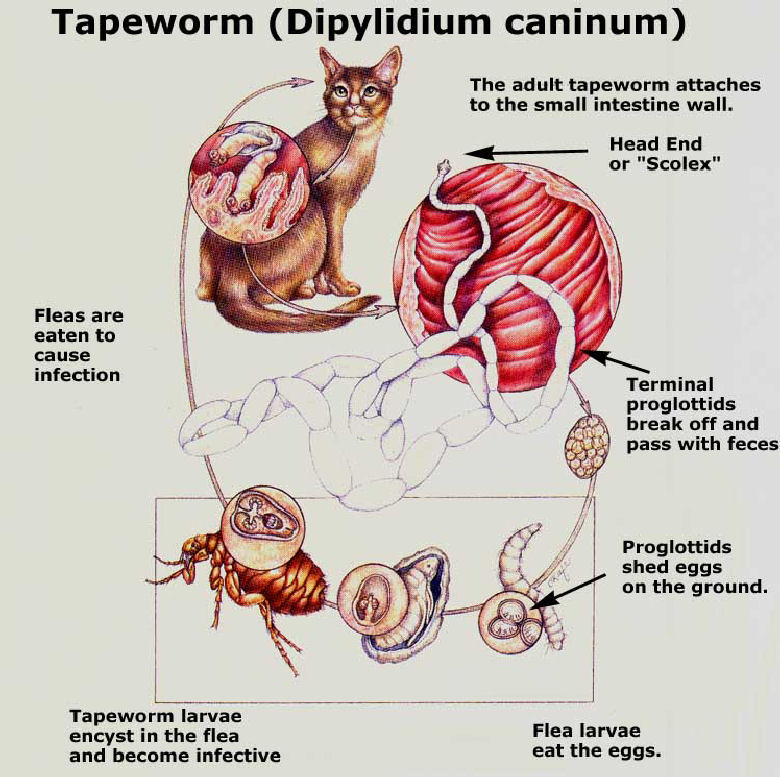207.WHAT IS A TAPEWORM?
This certainly isn’t a pleasant subject, but many people suffer from tapeworm and so there is great curiosity about it. A kind of flatworm, the tapeworm is an intestinal parasite.
This means that it lives in the digestive tract of another animal, called the host, and is fed by food which the host has partly digested.
The host of the tapeworm is nearly always a backboned animal such as a fish, a dog, or a man. The tapeworm has sucking discs on its head, by means of which it attaches itself to the inside of the intestines. It has no sense organs such as eyes or ears.
The muscles of a tapeworm are almost useless, and its nervous system is primitive. It has no mouth or digestive tract; it absorbs dissolved food through the walls of its body.
There are many species of tapeworms, ranging in length from about 0.1 millimeters to 9 meters. They are of many shapes. They may be unsegmented (undivided), or composed of a chain of segment-like parts. These grow one after the other, always forming behind the head. Each adult is both male and female.
How can a human being get a tapeworm inside his digestive tract? It could happen in the following way: The fertilized eggs of a tapeworm are passed out by the worm. Then a hog eats the eggs. Then the larvae hatch in the hog’s intestine.
Inside the hog, these small larvae burrow through the wall of the Intestine and go to other parts of the hog’s body. When they settle, they form a hard cyst.
Now suppose a human being eats pork that has been improperly cooked. (Proper cooking would kill the larvae in the cyst.) The human digestive juices free the larvae. They then attach themselves to the human intestines and there develop into adults—and a human being finds he has a tapeworm!
The harm a tapeworm does is taking part of the nourishment of the host’s food and secreting poisonous substances. Tapeworms do not cause death to man except in rare cases. There are now drugs which can remove a tapeworm from the intestines.



Leave a Reply